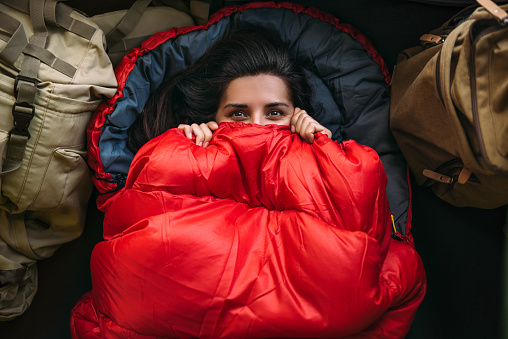Sleeping bags and pads provide comfort and warmth to ensure you sleep well while camping. They come in different shapes, colors, and sizes to serve consumers in various activities. Being able to properly care for and store your sleeping bag is essential as it would extend the lifespan of your bag.
Here we will be looking at the step-by-step ways you can clean, dry, and store your sleeping pads and bags.
How to Clean Your Bags
Cleaning your sleeping Pad is very important as it would help keep a hygienic environment and preserve the quality. If you’re using your bag more frequently, you may want to wash it more often than annually. Even if you don’t have a mold or mildew problem to solve, wash your bag. How you wash your sleeping bags would depend highly on the texture of the fabric used in making them, whether it is filled with synthetic fiberfill or not.
· Step 1
Read the care label to understand the do’s and don’ts and the necessary steps to clean your bag. All sleeping bags are required by law to have a care label with cleaning instructions. This instruction will guide you through the cleaning process.
· Step 2
Use detergent with a little water to address visible stains such as food and blood. Then proceed to use a clean white piece of clothing to dab and clean on areas with stains or you can use enzyme-based stain remover and work it into the stain with a soft-bristled nylon brush.
· Step 3
Soak your sleeping bag in warm or cold water mixed with detergent, and avoid using chlorine, bleach, and fabric softer to wash the sleeping bag so as not to ruin the fabric. Damp and scrub gently on your bag, then repeat this process till you are satisfied with the result.
How to Dry Out Your Bag
After cleaning your sleeping bag, you would need to dry out your bag to stop mold and mildew from growing on the surface and inside the insulation. You first need to unzip the bag, then hang your bag over a line or on a large hanger in a covered outdoor space for 6 to 7 hours.
Avoid leaving sleeping bags in direct sunlight, as the UV ray can diminish the fabric of your sleeping bag and make it appear dull or faded. You can also speed up the process by turning the bag inside every four hours to aid the drying process. This process is important because some dry bag outer shells are waterproof, which tends to slow moisture dissipation.
Also, another way to dissipate moisture from your dry bag is to set up a fan or dehumidifier; this will speed up the drying process. A temperature-controlled indoor area would also do the trick, or you can also use a large commercial dryer.
If you do not have access to a dryer or any modern technology, you should look for a tree or create a zip line to hang your sleeping bag.
Where to Store Your Bag
Sleeping bags and pads are sensitive to moisture and temperature, so your storage space matters. We suggest finding a humidity- and temperature-controlled location, such as an attic, garage, or closet, for safekeeping.
Because of dry bags’ susceptibility to extreme temperatures, it is a bad idea to store them in the trunk of your car. Find a suitable position in the corner of your tent or caravan; better yet, you can also use a bag pack to store your sleeping bag.
Also, placing your sleeping bag inside a giant breathable sack is a good way to store it.
Why Too Much Compression is Bad for Your Sleeping Bag
Your sleeping bags do not need to be compressed as this would only destroy and shorten the life span of your bag. Sleeping bags are Both down and synthetic fills that need to fluff up (loft) to create small air spaces within the insulation.
The sleeping bags are designed to be well-insulated, which is a key factor in keeping you warm. Storing your sleeping bag in a compressed state would only destroy the texture of your sleeping bag, so it is important to keep this in mind.
Even though both down and synthetic bag insulations do a good job of fluffing up after being compressed, there is a limit to their resilience. Avoid putting your sleeping bags and pads inside a stuffed bag.
Conclusion
Understanding the proper way to store and preserve your sleeping pads is important, as many need to pay more attention to the correct steps. Storing your bag properly will prolong the life of your bag and ensure that it keeps you warm and cozy for many years.
And if you’re looking for a one-stop shop for all you need in camping gear, check out Rooftoptents.ca, where you can find quality products at competitive prices. Our goal is to equip individuals with the necessary equipment to make their outdoor adventure enjoyable and safe! At RooftopTents.ca, we carry a wide selection of camping gear! From tents to solar lights, camp stoves, and storage solutions.


